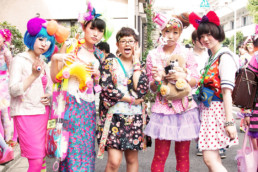Japanese Folklore: Pretty Guardian Sailor Moon
Pretty Guardian Sailor Moon

If I tell you that her hairstyle is famous all around the world for its blonde pigtails tied up into cute Odango (lit. Meatballs) can you guess who I'm talking about? No? Her outfit is a mix between a school uniform and a sailor's one and it doesn't ring any bell? No, this is impossible because we are talking about Usagi Tsukino.
She universally known as Sailor Moon the warrior in a sailor uniform that protects the Earth from evil aliens from all around the galaxy. Beloved heroine among children from the 90s and one of the ambassadress for Tokyo’s Olympic games in 2020.
Born from the sublime work of Naoko Takeuchi, at the beginning of the 90s, it immediately became and iconic character both in Japan and abroad. Triggering dreams of generations of people with her immortal love story with Tuxedo Kamen and teaching the values of friendship together with her companions of adventure, the Sailor Senshi, she is legend today still.
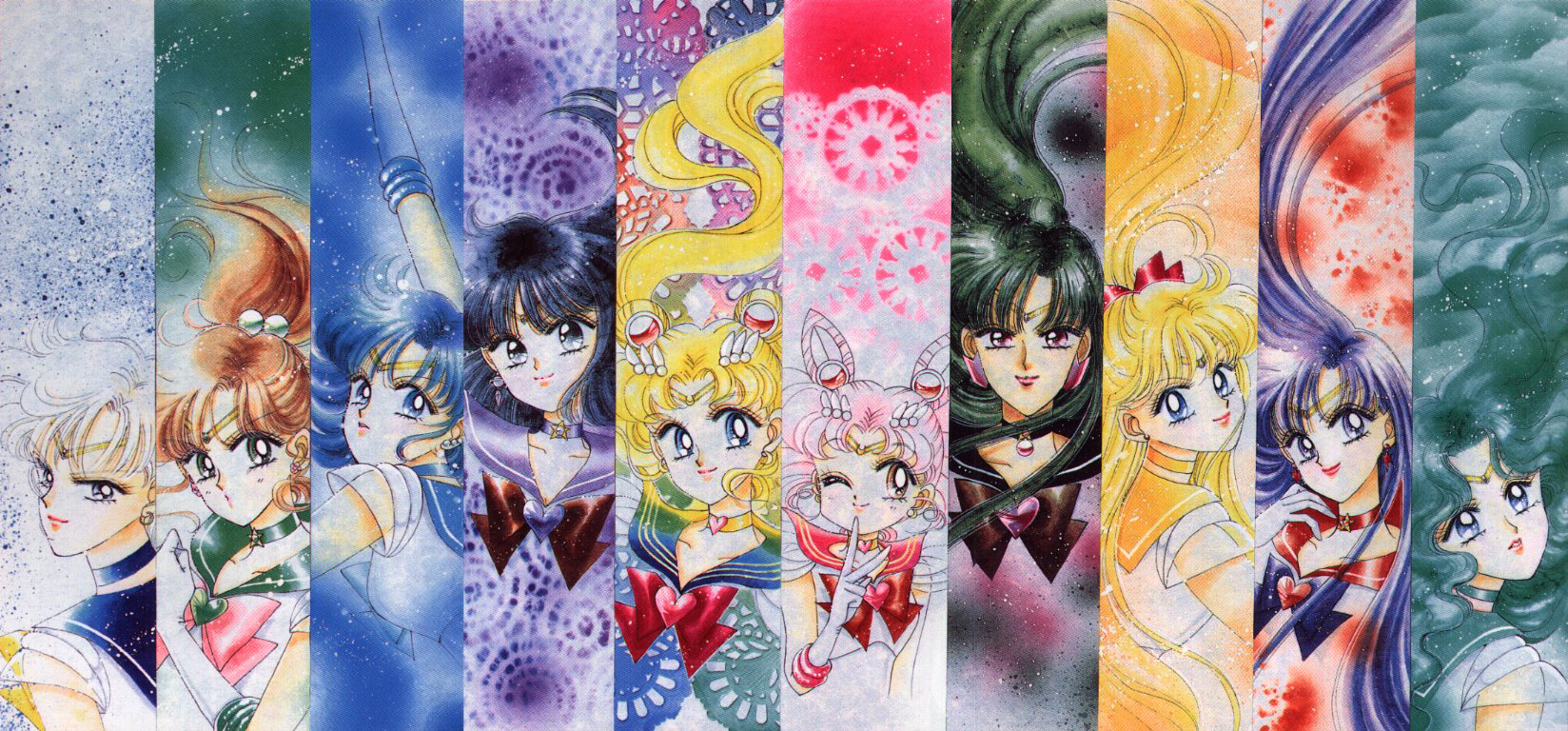
The origin
Sailor Moon was originally created to be the spin-off of Codename Sailor V. Yes! Our heroine from the moon was born after her companion Sailor Venus, true leader of the Sailor warriors. This manga represents the best example of Majokko (魔女っ子 "Magical girl"), that is a sub-genre of the shōjo genre. The typical plot for this genre tells the story of a magical girl supported by a magical animal. In our case we have three cats, Luna, Artemis and Diana. Usually the protagonist of this type of mangas has magical powers, mixing love and fantasy. However Sailor Moon is also the first female version of the genre Sentai Mono (戦隊モノ "fighting squad"). This is a genre that includes all those mangas in which a group of protagonists stick together and fight against evil forces.
So it is no surprise that Sailor Moon is, for this and other reasons, one of the best examples of Feminism in the manga world.
Love beyond time, space and genre
Sailor Moon not only taught us the values of friendship, but it also had a great impact on love, free from any generalizations for categories, as it often happens in mangas and even in real life.
We all know that the most known couple in the manga like in the anime is that formed by Sailor Moon and her Tuxedo Kamen, a love beyond time and space, hence immortal.
In love since their previous life, Princess Serenity and Prince Endymion form Earth, they take their names from the Greek moon goddess, Selene, and her beloved prince from Earth, Endymion. From the legend to reality, they love each other even in their present life as Usagi Tsukino and Mamoru Chiba, as they will love each other in the future too as Neo Queen Serenity and King Endymion.

One might think that is Tuxedo Kamen that rescues our heroine when she is in danger with his flying roses, but it’s his character that many times falls in the hands of the enemy, even becoming evil himself at some points. However, it’s only thanks to the love that Sailor Moon has for him that he manages to survive and with him, all us humans. Because as Takeuchi said “Girls have to be strong to protect the man they love”.
Sailor moon and the homosexual relationships
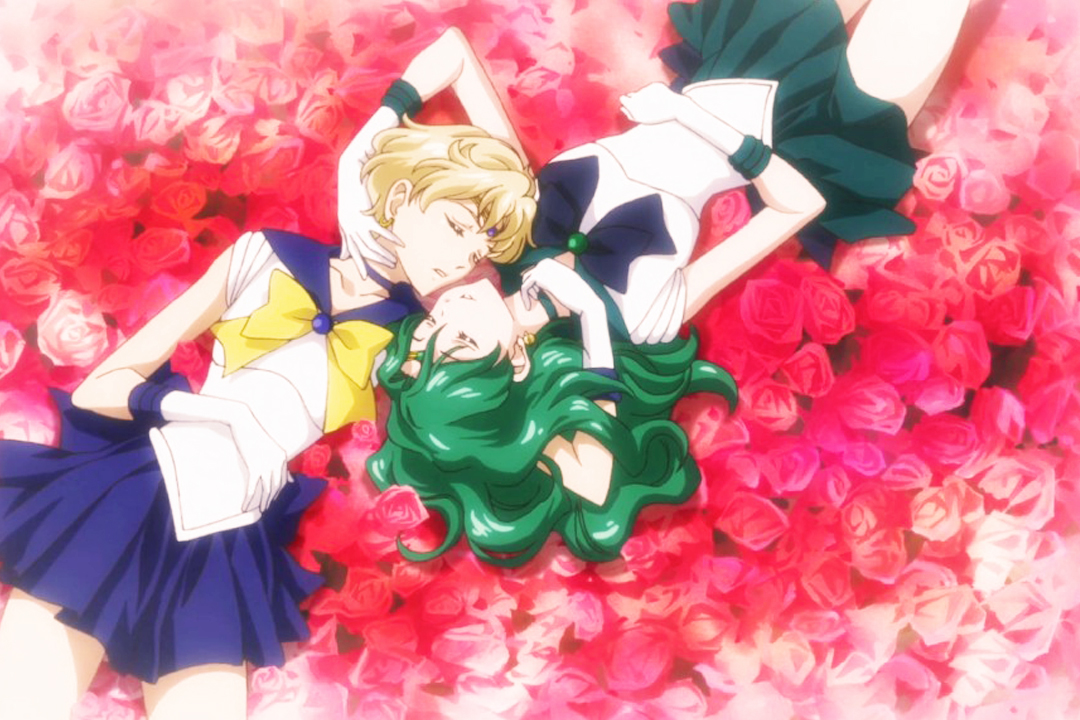
But there are also other love relationships in the manga. The sapphic and unconcealed relationship between the androgynous Sailor Uranus and the sensual Sailor Neptune. A relationship that is somewhat veiled but that is clearly visible from the third act on.
Also, there's the homosexual relationship between two emissaries of the Dark Kingdome. Zoisite and Kunzite's relationship changed from version to version. Love in the animated series and strong friendship that never becomes love in the manga.
But we can also mention the strong bond between Sailor Mars and Sailor Venus, that reminds us of the bond between Mars and Venus in the ancient myths.
Naoko Takeuchi: an empire among stars, art and style
The ‘mother’ of our beautiful sailor warriors is, as said before, Naoko Takeuchi, born in 1967. It is as if she won the lottery of life in the world of mangas. Not only her most famous work is well known all around the world, but she also married Yoshihito Togaki, ‘father’ of Yū Yū Hakusho and Hunter x Hunter.
Also, she is close friend with other famous mangakas like Wataru Yoshizumi (Marmalade Boy) e Yuu Watase (Fushigi Yûgi).
The passion for drawings has always been with her in spite of the fact that she studied chemistry in University. Her style is characterized by clean and delicate lines, that are particularly lovely in the art book with doilies as decoration.
She is a woman of many passions, from literature, to cars, arts and many other things. In many cases she used the Art Nouveau works of Alfons Muchas as references for her illustrations. Another great passion of hers is fashion, various outfits used by Sailor warriors and their enemies were inspired by Maison Dior. The wonderful and iconic gown worn by Princess Serenity is inspired by Dior’s “palladio” gown from the ‘92 spring/summer collection.
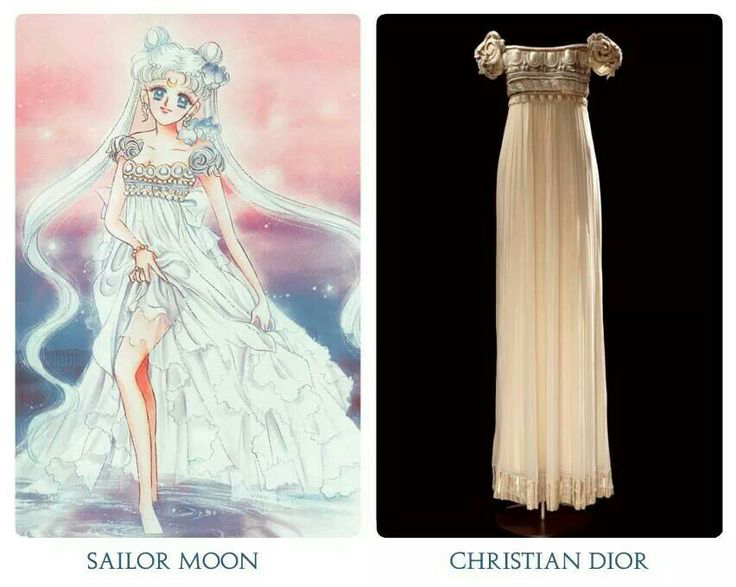
Thanks to its 20th anniversary, and now to its 25th anniversary, Sailor Moon shines brightly under a new lucky star. True happiness for all those kids that grew up with her and now have turned into grown up collector.
Sailor Moon Franchising
The Sailor Moon franchising goes from the classic dolls, to the most varied action figures. There are also countless make-up products, lots of cult objects like the replica of the Moon Stick, outfits and many things more.
The manga was adapted into a live action series, several OVAs, musicals and let's not forget the new anime adaptation of Sailor Moon Crystal released on July the 5th, in 2014.
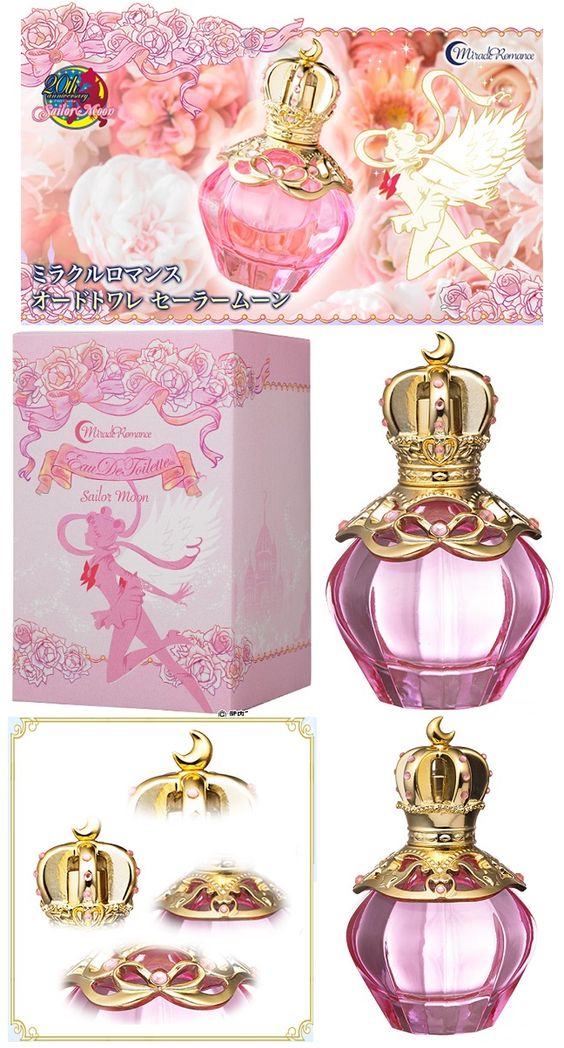
In Tokyo a theme bar was opened and remained active for some time. For all those that couldn’t go there, you can always visit the Azabu Juban “shopping district”, central district in Tokyo. This area is often shown in Sailor Moon’s frames. For every true fan this is a must if you want to feel like a real Sailor Warrior.
Photo credits: Tumblr, Pinterest.
Japan Folklore: Kitsune
Kitsune (狐)

The fox that always comes back
Kitsune. Clever, sly, with a beautiful fur the color of the Autumn leaves, a thick tail and a lovely face that makes them look like they are smiling. Foxes are in many cultures associated with slyness, but in Japan they have something more. In fact they have something magical and mysterious.
In the Japanese Folklore the kistunes are spirits in possession of great powers. They have fire breathing, they can create lightnings and can also enter people’s dreams. They can have a really long life and their powers grow stronger as they grow older, and so do their tails, that go from one, to two, three, up to nine of them. Their fur changes to become white (or sometimes gold), but according to some legends it can also be black.
The Powers
The kitsunes are famous for having shape-shifting powers. There are a great number of legends where these creatures take the shape of beautiful and charming women that make the fortunate or unfortunate man fall in love with them. They are ambivalent beings, on one side they are lovable lovers, on the other side they are mischievous creatures. In fact, there are different types of kitsunes.
The Zenko Kitsune (善狐 "good foxes") are the foxes that follow Inari, the Shinto deity of agriculture, harvest, rise and fertility. They are benevolent spirits and meeting one of them can only bring good news. On the contrary, the Yako Kistune (野狐 "foxes of the fields", o nogitsune) are mischievous and even evil. In contrast with the Zenko Kitsune, the Yako bring misfortune with their powers and can even posses people. The unlucky men that fall for their tricks are called Yako-tsuki and this possession makes them look they are lunatic. In the past it was said that people were possessed by these evil entities in order to find a justification for many mental illnesses. Sometimes the encounter with one of these spirits could bring to death.
They are not only intelligent but also wise. This wisdom increases with time, like their powers do, until they become omniscient. They know everything about this world, they know the past and what will happen in the future.
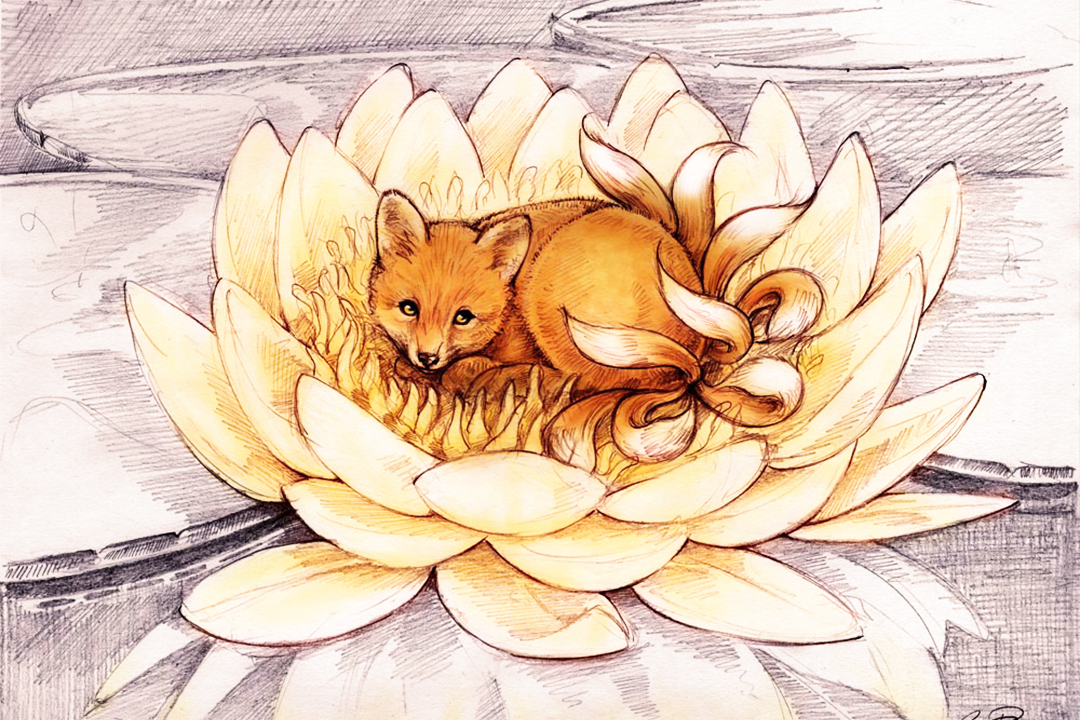
As the tale goes
The world Kitsune does not literally mean ‘Fox’. Kitsu was the word used to indicate the sound emitted by these animals. In ancient Japanese, Kitsu-ne meant “that comes back and sleeps”, or it could also be read as ki-tsune, “that always comes back” The explanation for these interpretations can be give by one of the many legends about these spirits.
The most ancient one goes like this:
«Ono, an inhabitant of Mino (says an ancient Japanese legend of A.D. 545), spent the seasons longing for his ideal of female beauty. He met her one evening on a vast moor and married her. Simultaneously with the birth of their son, Ono's dog was delivered of a pup which as it grew up became more and more hostile to the lady of the moors. She begged her husband to kill it, but he refused. At last one day the dog attacked her so furiously that she lost courage, resumed vulpine shape, leaped over a fence and fled.
"You may be a fox", Ono called after her, "but you are the mother of my son and I love you. Come back when you please; you will always be welcome".
So every evening she stole back and slept in his arms.»
(From the tale It comes back and sleeps written by monk Kyoukai in late VIII s. Or in the beginning of IX s.)
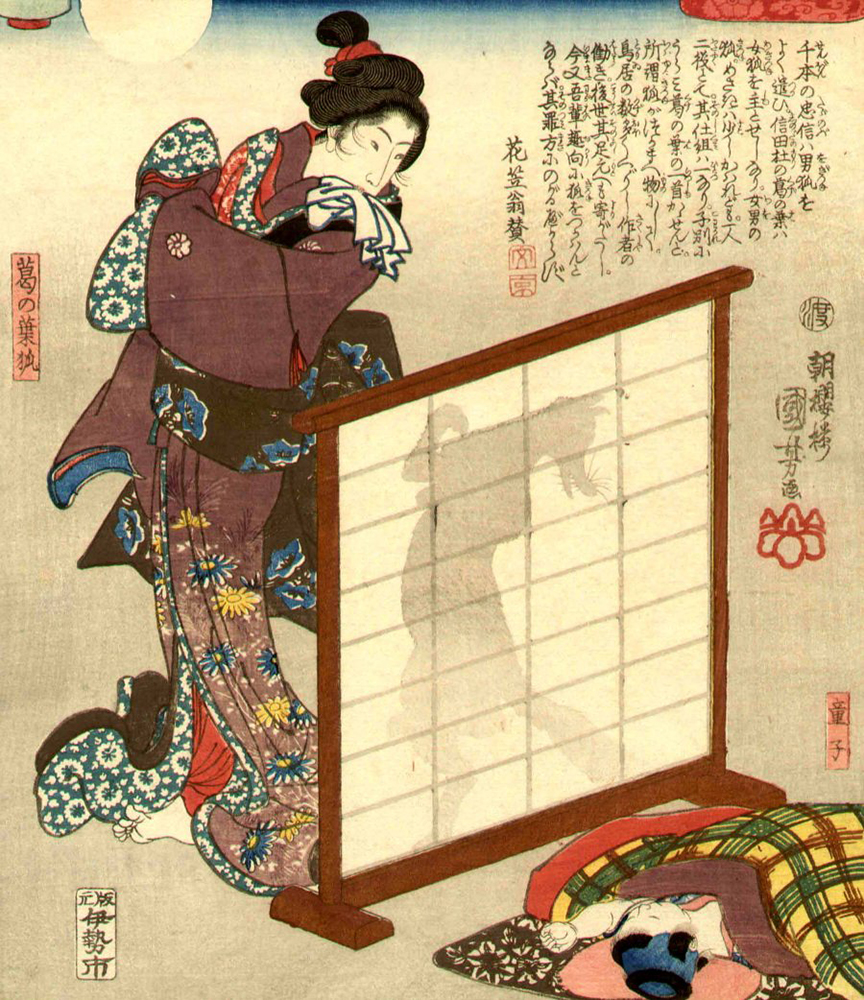
A dualist being
As mentioned, they are shapeshifting spirits and they have the ability to turn without age or sex problems. Their most famous and undoubtedly fascinating figure is that of a beautiful young woman. In fact Kitsune-gao (狐 顔 "fox face") is a term used to describe feminine features. High cheekbones and fine and narrow eyes, considered to be very sensual. According to tradition it is believed that seeing a beautiful woman wandering aimlessly during sunset hours it could actually be a fox.
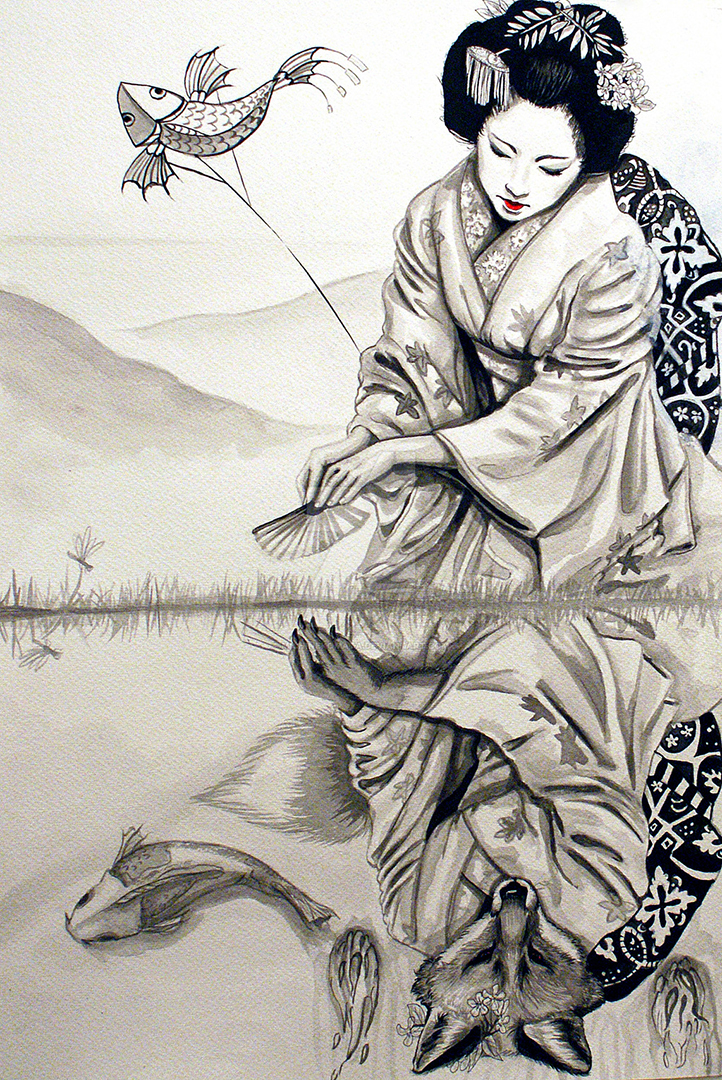
In order to discover their true nature we must find the tail as the Kitsune can not disguise it. Alternatively, you should be loyal people but also their dislike for dogs can be a signal. Loyal animals can perceive their true being. Sometimes in their malignant form, the Kitsune draw strength and power from her lover. They absorb their energies through sexual intercourse and dry up the human forces and gruesomely causing death.
There are several shrines dedicated to Inari, their protector. It's usual to find depictions of these animals around the temples. The most well known is the Fushimi Inari Taisha shrine dedicated to the gods located in Kyoto. Also present in Buddhism, we find Dakini, Inari's female alter ego, as she rides a white fox, brandishing a sword. In these temples, the faithful are used to leave offerings of food for them, udon, soba, sushi and preferably the Aburaage fried tofu which is said to be Kitzune's favourites.
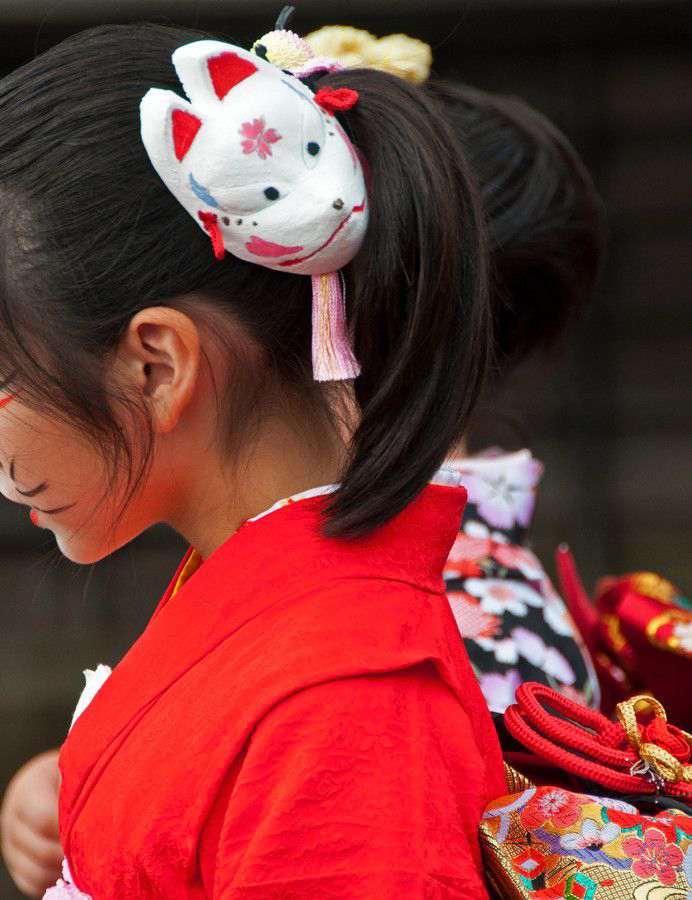
From the tradition to the animation
They are undoubtedly loved creatures in Japan. They are on traditional masks used in theatrical plays, in many variants: Gin-tenko / Silver fox, Kinko/ Golden fox, Hakuko/ the White fox, and many more.
The netsuke are the small statues made in wood or ivory. They are used as coin-purses to decorate kimonos, and are normally seen in popular mangas or anime. The most famous anime of the past few years is Naruto. Here the young ninja Naruto has the spirit of a fox sealed inside his body. This animal can be recognised in his personality, in his physical aspect, and in his powers too. We can find a fox in Inuyasa too. Here Shippo is a small demon fox that always creates funny gags changing his appearance.

Also, in the character of Kurama, from Yū Yū Hakusho, we find a fox spirit that was reborn in the human form of Shuichi Minamino. In this last character it extremely visible the dualistic nature of these spirits. On one side, the good-natured human being, devoted to his mother and loyal to his friends, on the other side, the cruel and unaffected fox spirit.
But these are just a few examples of how kitsunes have influenced the world of the animation. In Shiroichi, in the Tohoku region (north Japan), we can find the Miyagi Zao Fox Village. This is a faunistic park where it is possible to meet these lovely animals in their natural environment. Here you can see how friendly they can be and it's really easy to take pictures or even interact with them.
Festivals, Parades
Obviously, in a country so in love with traditions like Japan, there are numerous festivals dedicated to foxes too. The Kitsunebi matsuri, ‘The Festival of the Fire Fox’, is celebrated on the forth Saturday of September in the vicinity of the Okura Inari sanctuary of Hida. On this occasion, people create a masked parade, a sort of rappresentation of the so called ‘Marriage of the fox’, to invite good luck. During the New Year celebrations, in Kita (special ward of Tokyo) takes place the parade of the foxes of Ōji. During this event, everyone disguise as foxes and go to the Ōji Inari. This parade is inspired by the legend that tells how foxes all around Japan gather around a tree disguised as humans to celebrate the New Year and then reach the nearby sanctuary.
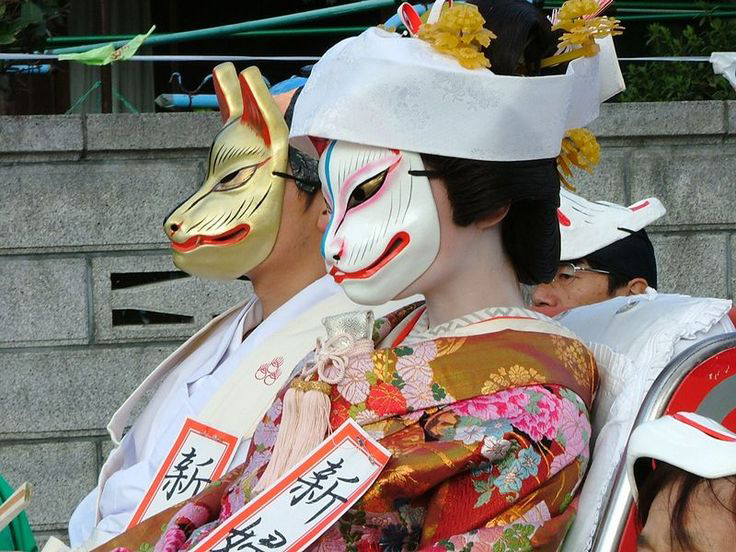
Marriage
We also have the saying Kitsune no Yomeiri (狐の嫁入り "the marriage of the foxes"). During the night foxes gather together, and in a line one behind the other, travel for rivers and mountains with lanterns made of paper to celebrate their marriages. An exception to this legend is Tokushima where it is believed that this is a funeral procession. According to Japanese people, if outside is raining but there is the sun too, then it means that foxes are celebrating a marriage.
This way of thinking changes from area to area. For example, in Ehime it happens when it is snowing, while in Kumamoto when there is the rainbow.
Nonetheless, with this atmospheric phenomenons it's not so uncommon to see small glittering lights. Those lights are the lanterns of the foxes. When you see something like this, pay attention, you might be able to see the marriage of the foxes!
Photo credits: tokyobling; mangadreams; pinterest; deviantart.
Japan Culture: Harajuku Girls
Harajuku Girls
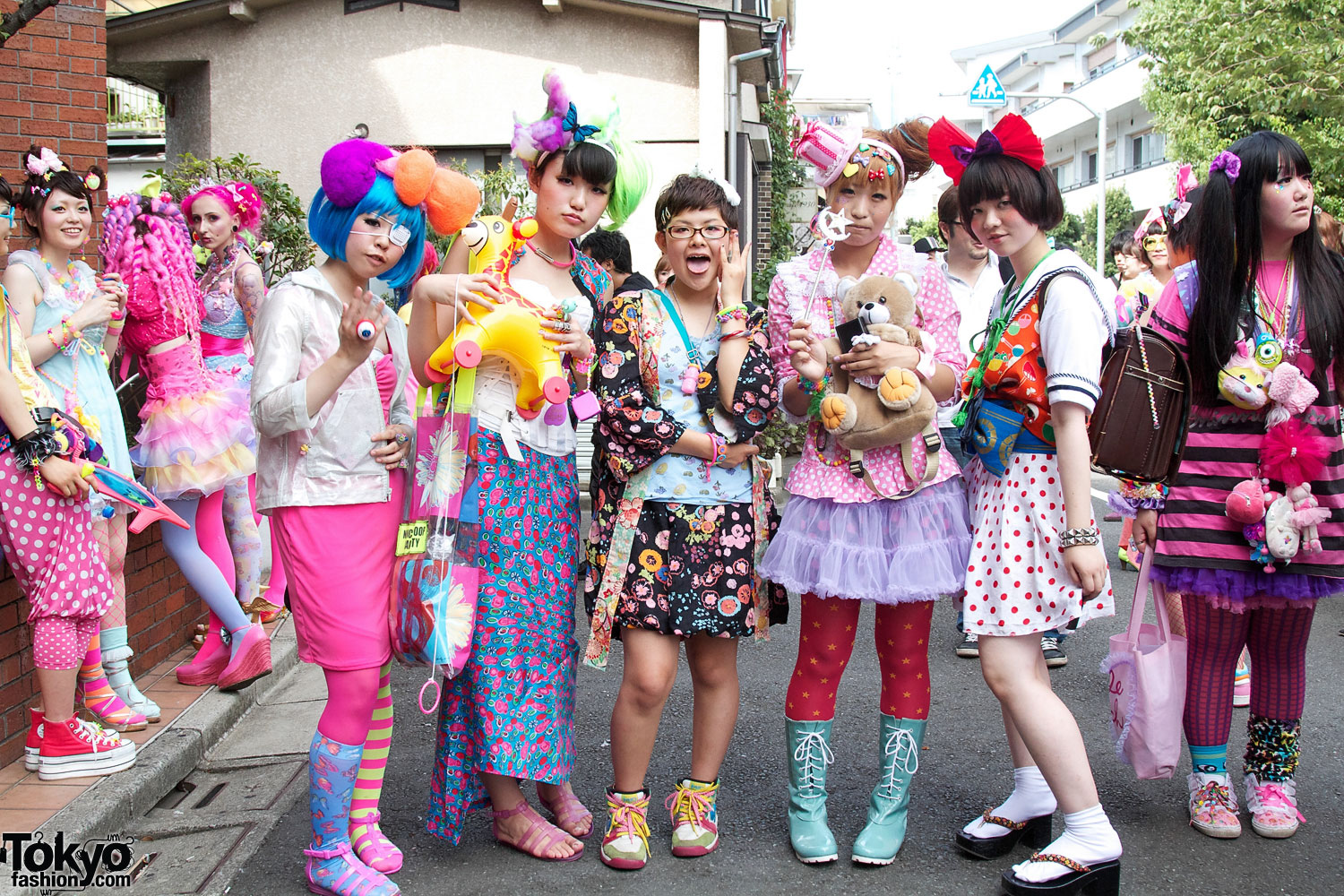
Harajuku girls - We've heart about the Harajuku girls (原宿ガール Harajuku gāru) at least once, if not for Gwen Stefani's melodies. The singer in 2004 managed to climb the international charts with this hit making this clothing style famous all over the world. Although it was very strange to a westerner's eye, the group became a huge success creating a vast empire. As a result, real brands such as Harajuku Lovers were born and are now famous throughout America and the world. Let us not forget the recent KuKu Harajuku, cartoon inspired by the band and the fashion. Despite Gwen Stefani has managed to establish herself in the western market with this brand, she isn't the creator. This particular look sees its birth some years before on the streets of the never boring Tokyo.

Originated in the second half of the nineties, the term Harajuku (Harajuku 原宿, "accommodation in the meadow") sees its birth in the homonymous area.
Shibuya, the special district of Tokyo where the Harajuku Station is situated, is a place known for the creation of new trends, never dull and extremely popular among the Japanese youth. This is also the district with the most famous shopping streets. The well know Omotesando and Takeshita, the first dedicated to the most famous brands (Chanel, Dior, Louis Vuitton, etc.) and the second to the youthful and alternative style. The latter tends to mingle with different brands and styles, creating something more innovative.

The Harajuku look is part of the street fashion. You can find different sub styles: gothic lolita, sweet lolita and decora to name a few. Although they are associated mainly with the girls in adolescence, within this culture the boys are not exempt. It is not rare to find among them those who follow a look more tied to the Japanese punk style.
Bright colours, layering, traditional Kimonos mingle with western clothes and accessories outside the lines. All of this makes brilliant ways to establish itself in these streets. Those who decide to follow the Harajuku style, must prepare for the race at the last constant trend, because in Japan everything is outclassed in a short amount of time.
It is admitted and granted everything in a look as long as it is always an expression of your own personal individuality. There is not a precise model to follow, it should not be a copy of someone else. The important thing is to express your way of being. For this reason, more than just a fashion this becomes a real lifestyle.
Photo credit: Tokyo Fashion; Amy in Wonderland









